Visit to download the full and correct content document: https://ebookmass.com/product/molecular-kinetics-in-condensed-phases-theory-simul ation-and-analysis-first-edition-elber/

More products digital (pdf, epub, mobi) instant download maybe you interests ...
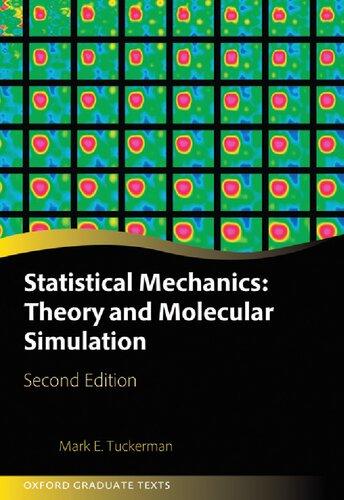
Statistical Mechanics: Theory and Molecular Simulation
2nd Edition Mark E. Tuckerman
https://ebookmass.com/product/statistical-mechanics-theory-andmolecular-simulation-2nd-edition-mark-e-tuckerman/
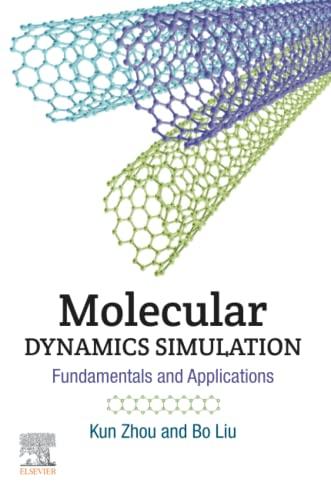
Molecular Dynamics Simulation 1st Edition Kun Zhou
https://ebookmass.com/product/molecular-dynamics-simulation-1stedition-kun-zhou/

Chemical kinetics : from molecular structure to chemical reactivity 2nd Edition Luís G. Arnaut
https://ebookmass.com/product/chemical-kinetics-from-molecularstructure-to-chemical-reactivity-2nd-edition-luis-g-arnaut/

Theories of Molecular Reaction Dynamics: The Microscopic Foundation of Chemical Kinetics 2nd Edition Niels E. Henriksen
https://ebookmass.com/product/theories-of-molecular-reactiondynamics-the-microscopic-foundation-of-chemical-kinetics-2ndedition-niels-e-henriksen/
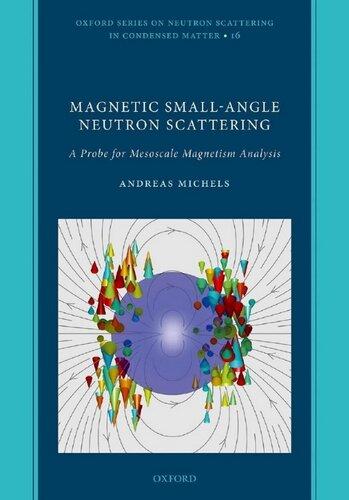
Magnetic Small-Angle Neutron Scattering: A Probe for Mesoscale Magnetism Analysis (Oxford Series on Neutron Scattering in Condensed Matter) 1st Edition Andreas Michels
https://ebookmass.com/product/magnetic-small-angle-neutronscattering-a-probe-for-mesoscale-magnetism-analysis-oxfordseries-on-neutron-scattering-in-condensed-matter-1st-editionandreas-michels/

Dale's Pharmacology Condensed, 3rd Edition Clive P.
Page
https://ebookmass.com/product/dales-pharmacology-condensed-3rdedition-clive-p-page/

Materials Kinetics John C. Mauro
https://ebookmass.com/product/materials-kinetics-john-c-mauro/
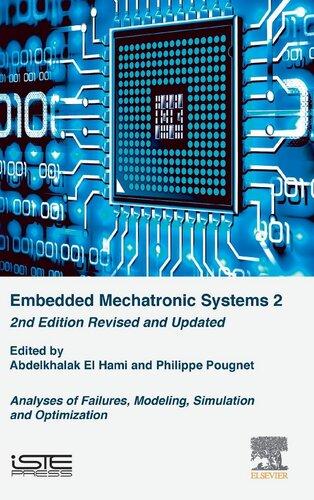
Embedded Mechatronic Systems, Volume 2: Analysis of Failures, Modeling, Simulation and Optimization 2nd Edition Abdelkhalak El Hami
https://ebookmass.com/product/embedded-mechatronic-systemsvolume-2-analysis-of-failures-modeling-simulation-andoptimization-2nd-edition-abdelkhalak-el-hami/
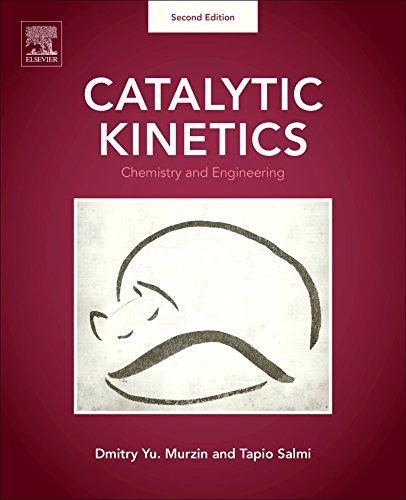
Catalytic Kinetics. Chemistry and Engineering 2nd Edition Dmitry Yu Murzin
https://ebookmass.com/product/catalytic-kinetics-chemistry-andengineering-2nd-edition-dmitry-yu-murzin/
MolecularKineticsinCondensedPhases
Theory,Simulation,andAnalysis
RonElber
W.A."Tex"MoncriefJr.EndowedChair OdenInstituteforComputationalEngineeringandSciences andDepartmentofChemistry
TheUniversityofTexasatAustin USA
DmitriiE.Makarov
TheUniversityofTexasatAustin USA
HenriOrland InstitutdePhysiqueThéorique CEASaclay France
Thiseditionfirstpublished2020
©2020JohnWiley&SonsLtd
Allrightsreserved.Nopartofthispublicationmaybereproduced,storedinaretrievalsystem,ortransmitted, inanyformorbyanymeans,electronic,mechanical,photocopying,recordingorotherwise,exceptas permittedbylaw.Adviceonhowtoobtainpermissiontoreusematerialfromthistitleisavailableathttp://www .wiley.com/go/permissions.
TherightofRonElber,DmitriiE.Makarov,andHenriOrlandtobeidentifiedastheauthorsofthisworkhas beenassertedinaccordancewithlaw.
RegisteredOffices
JohnWiley&Sons,Inc.,111RiverStreet,Hoboken,NJ07030,USA
JohnWiley&SonsLtd,TheAtrium,SouthernGate,Chichester,WestSussex,PO198SQ,UK
EditorialOffice
TheAtrium,SouthernGate,Chichester,WestSussex,PO198SQ,UK
Fordetailsofourglobaleditorialoffices,customerservices,andmoreinformationaboutWileyproductsvisit usatwww.wiley.com.
Wileyalsopublishesitsbooksinavarietyofelectronicformatsandbyprint-on-demand.Somecontentthat appearsinstandardprintversionsofthisbookmaynotbeavailableinotherformats.
LimitofLiability/DisclaimerofWarranty
Inviewofongoingresearch,equipmentmodifications,changesingovernmentalregulations,andtheconstant flowofinformationrelatingtotheuseofexperimentalreagents,equipment,anddevices,thereaderisurgedto reviewandevaluatetheinformationprovidedinthepackageinsertorinstructionsforeachchemical,pieceof equipment,reagent,ordevicefor,amongotherthings,anychangesintheinstructionsorindicationofusage andforaddedwarningsandprecautions.Whilethepublisherandauthorshaveusedtheirbesteffortsin preparingthiswork,theymakenorepresentationsorwarrantieswithrespecttotheaccuracyorcompleteness ofthecontentsofthisworkandspecificallydisclaimallwarranties,includingwithoutlimitationanyimplied warrantiesofmerchantabilityorfitnessforaparticularpurpose.Nowarrantymaybecreatedorextendedby salesrepresentatives,writtensalesmaterialsorpromotionalstatementsforthiswork.Thefactthatan organization,website,orproductisreferredtointhisworkasacitationand/orpotentialsourceoffurther informationdoesnotmeanthatthepublisherandauthorsendorsetheinformationorservicestheorganization, website,orproductmayprovideorrecommendationsitmaymake.Thisworkissoldwiththeunderstanding thatthepublisherisnotengagedinrenderingprofessionalservices.Theadviceandstrategiescontainedherein maynotbesuitableforyoursituation.Youshouldconsultwithaspecialistwhereappropriate.Further,readers shouldbeawarethatwebsiteslistedinthisworkmayhavechangedordisappearedbetweenwhenthisworkwas writtenandwhenitisread.Neitherthepublishernorauthorsshallbeliableforanylossofprofitoranyother commercialdamages,includingbutnotlimitedtospecial,incidental,consequential,orotherdamages.
LibraryofCongressCataloging-in-PublicationData
Names:Elber,Ron,author.|Makarov,DmitriiE.,author.|Orland,Henri, author.
Title:Molecularkineticsincondensedphases:theory,simulation,and analysis/RonElber,DmitriiE.Makarov,HenriOrland.
Description:Firstedition.|Hoboken,NJ:Wiley,[2020]|Includes bibliographicalreferencesandindex.
Identifiers:LCCN2019024971(print)|LCCN2019024972(ebook)|ISBN 9781119176770(hardback)|ISBN9781119176787(adobepdf)|ISBN 9781119176794(epub)
Subjects:LCSH:Chemicalkinetics–Mathematicalmodels.|Stochastic processes–Mathematicalmodels.|Molecularstructure.|Molecular theory.
Classification:LCCQD502.E432019(print)|LCCQD502(ebook)|DDC 541/.394–dc23
LCrecordavailableathttps://lccn.loc.gov/2019024971
LCebookrecordavailableathttps://lccn.loc.gov/2019024972
CoverDesign:Wiley
CoverImages:CourtesyofRonElber;©atakan/iStock.com
Setin10/12ptWarnockProbySPiGlobal,Chennai,India
PrintedandboundbyCPIGroup(UK)Ltd,Croydon,CR04YY 10987654321
Wededicatethismonographtoourfamilies,inappreciationoftheirlove andsupport.
HenriOrlanddedicatesthebooktoElisabeth,Chloé,Jonathan,Sarah, andYasha.
DmitriiE.MakarovtoValentina,Evgenii,andVsevolodMakarov. RonElbertoVirginia,Dassi,Nurit,andNir.
Contents
Acknowledgments xiii
Introduction:HistoricalBackgroundandRecentDevelopmentsthat MotivatethisBook xv
1TheLangevinEquationandStochasticProcesses 1
1.1GeneralFramework 1
1.2TheOrnstein-Uhlenbeck(OU)Process 5
1.3TheOverdampedLimit 8
1.4TheOverdampedHarmonicOscillator:AnOrnstein–Uhlenbeck process 11
1.5DifferentialFormandDiscretization 12
1.5.1Euler-MaruyamaDiscretization(EMD)andItôProcesses 15
1.5.2StratonovichDiscretization(SD) 17
1.6RelationBetweenItôandStratonovichIntegrals 19
1.7SpaceVaryingDiffusionConstant 21
1.8ItôvsStratonovich 23
1.9DetailedBalance 23
1.10MemoryKernel 25
1.11TheManyParticleCase 26 References 26
2TheFokker–PlanckEquation 29
2.1TheChapman–KolmogorovEquation 29
2.2TheOverdampedCase 30
2.2.1DerivationoftheSmoluchowski(Fokker–Planck)Equationusingthe Chapman–KolmogorovEquation 30
2.2.2AlternativeDerivationoftheSmoluchowski(Fokker–Planck) Equation 33
2.2.3TheAdjoint(orReverseorBackward)Fokker–PlanckEquation 34
2.3TheUnderdampedCase 34
2.4TheFreeCase 35
2.4.1OverdampedCase 35
2.4.2UnderdampedCase 36
2.5AveragesandObservables 37 References 39
3TheSchrödingerRepresentation 41
3.1TheSchrödingerEquation 41
3.2SpectralRepresentation 43
3.3GroundStateandConvergencetotheBoltzmannDistribution 44 References 47
4DiscreteSystems:TheMasterEquationandKineticMonte Carlo 49
4.1TheMasterEquation 49
4.1.1Discrete-TimeMarkovChains 49
4.1.2Continuous-TimeMarkovChains,MarkovProcesses 51
4.2DetailedBalance 53
4.2.1FinalStateOnly 54
4.2.2InitialStateOnly 54
4.2.3InitialandFinalState 55
4.2.4MetropolisScheme 55
4.2.5Symmetrization 55
4.3KineticMonteCarlo(KMC) 58 References 61
5PathIntegrals 63
5.1TheItôPathIntegral 63
5.2TheStratonovichPathIntegral 66 References 67
6BarrierCrossing 69
6.1FirstPassageTimeandTransitionRate 69
6.1.1AverageMeanFirstPassageTime 71
6.1.2DistributionofFirstPassageTime 73
6.1.3TheFreeParticleCase 74
6.1.4ConservativeForce 75
6.2KramersTransitionTime:AverageandDistribution 77
6.2.1KramersDerivation 78
6.2.2MeanFirstPassageTimeDerivation 80
6.3TransitionPathTime:AverageandDistribution 81
6.3.1TransitionPathTimeDistribution 82
6.3.2MeanTransitionPathTime 84 References 86
7SamplingTransitionPaths 89
7.1DominantPathsandInstantons 92
7.1.1Saddle-PointMethod 92
7.1.2TheEuler-LagrangeEquation:DominantPaths 92
7.1.3SteepestDescentMethod 96
7.1.4GradientDescentMethod 97
7.2PathSampling 98
7.2.1MetropolisScheme 98
7.2.2LangevinScheme 99
7.3BridgeandConditioning 99
7.3.1FreeParticle 102
7.3.2TheOrnstein-UhlenbeckBridge 102
7.3.3ExactDiagonalization 104
7.3.4CumulantExpansion 105 References 111 AppendixA:GaussianVariables 111 AppendixB 113
8TheRateofConformationalChange:Definitionand Computation 117
8.1First-orderChemicalKinetics 117
8.2RateCoefficientsfromMicroscopicDynamics 119
8.2.1ValidityofFirstOrderKinetics 120
8.2.2MappingContinuousTrajectoriesontoDiscreteKineticsand ComputingExactRates 123
8.2.3ComputingtheRateMoreEfficiently 126
8.2.4TransmissionCoefficientandVariationalTransitionState Theory 128
8.2.5HarmonicTransition-StateTheory 129 References 131
9Zwanzig-Caldeiga-LeggettModelforLow-Dimensional Dynamics 133
9.1Low-DimensionalModelsofReactionDynamicsFroma MicroscopicHamiltonian 133
9.2StatisticalPropertiesoftheNoiseandtheFluctuation-dissipation Theorem 137
9.2.1EnsembleApproach 138
9.2.2Single-TrajectoryApproach 139
9.3Time-ReversibilityoftheLangevinEquation 142 References 145
x Contents
10EscapefromaPotentialWellintheCaseofDynamics ObeyingtheGeneralizedLangevinEquation:General SolutionBasedontheZwanzig-Caldeira-Leggett Hamiltonian 147
10.1DerivationoftheEscapeRate 147
10.2TheLimitofKramersTheory 150
10.3SignificanceofMemoryEffects 152
10.4ApplicationsoftheKramersTheorytoChemicalKineticsin CondensedPhases,ParticularlyinBiomolecularSystems 153
10.5ACommentontheUseoftheTerm“FreeEnergy”inApplicationto ChemicalKineticsandEquilibrium 155 References 156
11DiffusiveDynamicsonaMultidimensionalEnergy Landscape 157
11.1GeneralizedLangevinEquationwithExponentialMemorycanbe Derivedfroma2DMarkovModel 157
11.2TheoryofMultidimensionalBarrierCrossing 161
11.3BreakdownoftheLangerTheoryintheCaseofAnisotropic Diffusion:theBerezhkovskii-ZitsermanCase 167 References 171
12QuantumEffectsinChemicalKinetics 173
12.1WhenisaQuantumMechanicalDescriptionNecessary? 173
12.2HowDotheLawsofQuantumMechanicsAffecttheObserved TransitionRates? 174
12.3SemiclassicalApproximationandtheDeepTunnelingRegime 177
12.4PathIntegrals,Ring-PolymerQuantumTransition-StateTheory, InstantonsandCentroids 184 References 191
13ComputerSimulationsofMolecularKinetics: Foundation 193
13.1ComputerSimulations:StatementofGoals 193
13.2TheEmpiricalEnergy 195
13.3MolecularStates 197
13.4MeanFirstPassageTime 199
13.5CoarseVariables 199
13.6Equilibrium,Stable,andMetastableStates 200 References 202
14TheMasterEquationasaModelforTransitionsBetween Macrostates 203 References 211
15DirectCalculationofRateCoefficientswithComputer Simulations 213
15.1ComputerSimulationsofTrajectories 213
15.2CalculatingRatewithTrajectories 219 References 221
16ASimpleNumericalExampleofRateCalculations 223 References 231
17RareEventsandReactionCoordinates 233 References 240
18Celling 241 References 252
19AnExampleoftheUseofCells:AlanineDipeptide 255 References 257 Index 259
Acknowledgments
REacknowledgesresearchsupportfromtheRobertA.WelchFoundation (GrantNo.F-1896)andfromtheNationalInstitutesofHealth(GrantNo. GM059796).Heisalsogratefultohisco-workersAlfredoECardenas,Arman Fathizadeh,PiaoMa,KatelynPoole,ClarkTempleton,andWeiWei,whohave providedmanyconstructivecommentsduringthepreparationofthistext. TheassistanceofArmanFatizadehandAtisMuratinthepreparationofthe coverimageandofAlfredoE.CardenasandWeiWeiinproductionofsomeof thefiguresisgreatlyacknowledged.TheMuellertrajectorieswerecomputed usingaprogramwrittenbyPiaoMaoandthealaninedipeptidecalculations wererunbyWeiWei.
DEMacknowledgesresearchsupportfromtheRobertA.WelchFoundation(GrantNo.F-1514)andtheNationalScienceFoundation(GrantNo.CHE 1566001),aswellastheilluminatingcommentsfromhiscolleaguesAlexanderM.Berezhkovskii,PeterHamm,ErikHolmstrom,HannesJonsson,Eduardo Medina,DanielNettels,EliPollak,RohitSatija,BenjaminSchuler,andFlurin Sturzenegger.
HOwouldliketothankM.BauerandK.Mallickfornumerousilluminating discussions.
Introduction:HistoricalBackgroundandRecent DevelopmentsthatMotivatethisBook
Thisbookgrewfromthelecturesgivenatthesummerschoolsthatthethree ofusorganizedinTellurideandinLausanne.Thepurposeoftheschools wastointroduceyoungresearcherstomodernkinetics,withanemphasisto applicationsinlifesciences,inwhichrigorousmethodsrootedinstatistical physicsareplayinganincreasingrole.Indeed,molecular-levelunderstanding ofvirtuallyanyprocessthatoccursincellularenvironmentrequiresakinetic descriptionaswellastheabilitytomeasureand/orcomputetheassociated timescales.Similarly,dynamicphenomenaoccurringinmaterials,suchas nucleationorfracturegrowth,requireakineticframework.Experimentaland theoreticaldevelopmentsofthepasttwodecades,whicharebrieflyoutlined below,rejuvenatedthewell-establishedfieldofkineticsandplaceditatthe junctureofbiophysics,chemistry,molecularbiology,andmaterialsscience; thecompositionoftheclassattendingtheschools,whichincludedgraduate studentsandpostdocsworkingindiverseareas,reflectedthisrenewedinterest inkineticphenomena.Inthisbookwestrivetointroduceadiverseaudience tothemoderntoolkitofchemicalkinetics.Thistoolkitenablespredictionof kineticphenomenathroughcomputersimulations,aswellasinterpretation ofexperimentalkineticdata;itinvolvesmethodsthatrangefromatomistic simulationstophysicaltheoriesofstochasticphenomenatodataanalysis.
Thematerialpresentedinthisbookcanbelooselydividedintothree interconnectedparts.ThefirstpartconsistsofChapter1–7andprovidesa comprehensiveaccountofstochasticdynamicsbasedonthemodelwherethe dynamicsoftherelevantdegree(s)offreedomisdescribedbytheLangevin equation.TheLangevinmodelisespeciallyimportantforseveralreasons: First,itisthesimplestmodelthatcapturestheessentialfeaturesofanyproper kinetictheory,therebyofferingimportantinsights.Second,itoftenoffers aminimal,low-dimensionaldescriptionofexperimentaldata.Third,many problemsformulatedwithinthismodelcanbesolvedanalytically.TheoreticalapproachestoLangevindynamicsdescribedinthisbookincludethe Fokker–Planckequation,mappingbetweenstochasticdynamicsandquantum mechanics,andPathIntegrals.
xvi Introduction:HistoricalBackgroundandRecentDevelopmentsthatMotivatethisBook
Thesecondpartofthebook,comprisedofChapter8–12,describesratetheoriesandexplainsourcurrentunderstandingofwhata“reactionrate”isand howitisconnectedtotheunderlyingmicroscopicdynamics.Theratetheories discussedinthispartrangefromthesimpletransitionstatetheorytomultidimensionaltheoriesofdiffusivebarriercrossing.Whiletheywereoriginally formulatedindifferentlanguagesandinapplicationtodifferentphenomena, weexplaintheirinterrelationshipandformulatethemusingaunifiedlanguage.
Finally,thethirdpart,formedbyChapter13–19,focusesonatomisticsimulationsanddetailsapproachesthataimto:(i)performsuchsimulationsinthe firstplace,(ii)predictkineticphenomenaoccurringatlongtimetimescalesthat cannotbereachedviabruteforcesimulations,and(iii)obtaininsightsfromthe simulationdata(e.g.byinferringthecomplexdynamicalnetworksortransition pathwaysinlarge-scalebiomolecularrearrangements).
Westartwithabriefhistoricaloverviewofthefield.Tomostchemists,the centerpieceofchemicalkineticsistheArrheniuslaw.Thisphenomenological rulestatesthattheratecoefficientofachemicalreaction,whichquantifieshow fastsomechemicalspeciescalledreactant(s)interconvertintodifferentspecies, theproduct(s),canbewrittenintheform
Tosomeonewithatraditionalphysicsbackground,however,thisrulemay requiremuchexplaining.Inclassicalmechanics,thestateofamolecular systemconsistingof N atomsisdescribedbyitspositioninphasespace (x, p), where x isthe3N -dimensionalvectorcomprisedofthecoordinatesofits atomsand p thecorrespondingvectoroftheirmomenta.Thetimeevolution inphasespaceisgovernedbyNewton’ssecondlaw,whichresultsinasystem of6N differentialequations.Whatexactlydoesachemistmeanby“reactants” or“products”?When,why,andhowcanthecomplexNewtoniandynamics (orthedynamicsgovernedbythelawsofquantummechanics)bereducedto asimpleratelaw,whatisthephysicalmeaningof �� and Ea ,andhowcanwe predicttheirvalues?
EarlysystematicattemptstoanswerthesequestionsstartedintheearlytwentiethcenturywithworkbyReneMarcelin[1]andculminatedwiththeideasof transitionstatetheoryformulatedbyWigner[2],Eyring[3]andothers(see,e.g., thereview[4].Inthemodernlanguage(closesttoWigner’sformulation)“transitionstate”isahypersurfacethatdividesthephasespaceintothereactants andproducts;itfurtherpossessesthehypotheticpropertythatanytrajectory crossingthishypersurfaceheadingfromthereactantstotheproductswillnot turnback.Interestingly,theexistence(inprinciple)ofsuchahypersurfacehas remainedanunsettledissueevenintherecentpast[5].Inpractice,transition statetheoryisoftenagoodapproximationforgas-phasereactionsinvolving fewatoms,orfortransitionsinsolids,whichhavehighsymmetry.Butpractical
Introduction:HistoricalBackgroundandRecentDevelopmentsthatMotivatethisBook
transition-statetheoryestimatesoftheprefactor �� forbiochemicalphenomena thattakeplaceinsolutionareusuallyoffbymanyordersofmagnitude.
SeveralimportantdevelopmentsadvancedourunderstandingoftheArrheniuslawlaterinthetwentiethcentury.First,Kramersinhisseminalpaper[6] approachedtheproblemfromadifferentstartingpoint:insteadofconsideringthedynamicsinthehigh-dimensionalspaceinvolvingallthedegreesof freedom,heproposedamodelwhereoneimportantdegreeoffreedomcharacterizingthereactionistreatedexplicitly,whiletheeffectoftheremaining degreesoffreedomiscapturedphenomenologicallyusingtheoryofBrownian motion.Kramers’ssolutionofthisproblemdescribedinChapter6ofthisbook hashadatremendousimpact,particularly,onbiophysics.
Second,Keckandcollaborators[7]showedthat,evenifthehypersurfaceseparatingtheproductsfromthereactantsdoesnotprovideapointofnoreturn andcanberecrossedbymoleculartrajectories,itisstillpossibletocorrectfor suchrecrossings,and–iftherearenottoomany–practicalcalculationmethodsexistthatwillyieldtheexactrate[8–10].
Third,Kramers’sideaswereextendedbeyondsimple,one-dimensionalBrowniandynamicstoincludemultidimensionaleffects[11]andconformational memory[12,13].Moreover,aunificationofvariousratetheorieswasachieved [4,14,15]usingtheideathatBrowniandynamicscanbeobtainedfromthe conservativedynamicsofanextendedsystemwherethedegreeoffreedomof interestiscoupledbilinearlytoacontinuumofharmonicoscillators[16,17]. ThisunifiedperspectiveonratetheorieswillbeexploredindetailinChapter 9–11ofthisbook.
Thereis,however,moretokineticsthancalculatingtherateofanelementary chemicalstep.Manybiophysicaltransportphenomenacannotbecharacterized byasingleratecoefficientasinEq.(1).Yetadescriptionofsuchphenomenainfullatomisticdetailwouldbothlackinsight(i.e.failtoprovidetheir salientfeaturesormechanisms)andbeprohibitivecomputationally.Thechallengeistofindamiddlegroundbetweensimplephenomenologicaltheories andexpensivemolecularsimulations,ataskthathasbeentackledbyahostof newmethodsthathaveemergedinthelastdecadeandthatemploy“celling” strategiesdescribedinChapters18–19ofthisbook.
Anotherrecentdevelopmentinmolecularkineticshasbeendrivenby single-moleculeexperiments,whosetimeresolutionhasbeensteadilyimproving:ithasbecomepossibletoobservepropertiesofmoleculartransitionpaths bycatchingmolecules enroute fromreactantstoproducts[18,19]asthey crossactivationbarriers.Suchmeasurementsprovidecriticaltestsofvarious ratetheoriesdescribedinChapters6,10,11,andinformusaboutelusive reactionmechanisms.Propertiesoftransitionpaths,suchastheirtemporal durationanddominantshapearediscussedinChapter6–7.
Giventhatthefocusofthisbookisonthedynamicphenomenaincondensed phases,andespeciallyonbiophysicalapplications,anumberoftopicswere
xviii Introduction:HistoricalBackgroundandRecentDevelopmentsthatMotivatethisBook leftout.Those,forexample,includetheoriesofreactionrateinthegasphase. Likewise,thelow-frictionregime(alsoknownastheenergydiffusionregime) andtherelatedKramersturnoverproblem[15]forbarriercrossingarenot coveredhere,asthosearerarelypertinentforchemicaldynamicsinsolution. Throughoutmostofthisbook,itwasassumedthatthedynamicsofmolecules canbedescribedbythelawsofNewtonianmechanics,withquantummechanicsonlyenteringimplicitlythroughthegoverninginter-andintramolecular interactions.Thisassumptionholdsinmanycases,butthelawsofquantum mechanicsbecomeimportantwhenachemicalreactioninvolvesthetransfer ofalightparticle,suchasprotonorelectron,and/orwhenitoccursatavery lowtemperature.Thesubjectofquantumratetheorycouldfillaseparatebook [20,21];hereitsdiscussionislimitedtoasinglechapter(Chapter12)thatis onlymeanttoprovidearudimentaryintroduction.
References
1 Marcelin,R.(1915). Ann.Phys. 3:120.
2 Wigner,E.(1932). Z.Phys.Chem.Abt.B 19:203.
3 Eyring,H.(1935).Theactivatedcomplexinchemicalreactions. J.Chem. Phys. 3:107.
4 Pollak,E.andTalkner,P.(2005).Reactionratetheory:whatitwas,whereis ittoday,andwhereisitgoing? Chaos 15(2):26116.
5 Mullen,R.G.,Shea,J.E.,andPeters,B.(2014).Communication:anexistence testfordividingsurfaceswithoutrecrossing. J.Chem.Phys. 140(4):041104.
6 Kramers,H.A.(1940).Brownianmotioninafieldofforceandthediffusion modelofchemicalreactions. Physica 7:284–304.
7 Shui,V.H.,Appleton,J.P.,andKeck,J.C.(1972).MonteCarlotrajectorycalculationsofthedissociationofHClinAr. J.Chem.Phys. 56:4266.
8 Chandler,D.(1978). J.Chem.Phys. 68:2959.
9 Bennett,C.H.(1977).Moleculardynamicsandtransitionstatetheory:the simulationofinfrequentevents.In: AlgorithmsforChemicalComputations, vol.46,63–97.AmericanChemicalSociety.
10 Truhlar,D.G.,Garrett,B.C.,andKlippenstein,S.J.(1996).Currentstatusof transition-statetheory. J.Phys.Chem. 100(31):12771–12800.
11 Langer,J.S.(1969). Ann.Phys.(N.Y.)54:258.
12 Grote,R.F.andHynes,J.T.(1980).Thestablestatespictureofchemical reactions.II.Rateconstantsforcondensedandgasphasereactionmodels. J.Chem.Phys. 73(6):2715–2732.
13 Grote,R.F.andHynes,J.T.(1981).Reactivemodesincondensedphasereactions. J.Chem.Phys. 74(8):4465–4475.
14 Pollak,E.(1986).Theoryofactivatedrate-processes-anewderivationof Kramersexpression. J.Chem.Phys. 85(2):865–867.
Introduction:HistoricalBackgroundandRecentDevelopmentsthatMotivatethisBook
15 Hanggi,P.,Talkner,P.,andBorkovec,M.(1990).50yearsafterKramers. Rev.Mod.Phys. 62:251.
16 Zwanzig,R.(2001). NonequilibriumStatisticalMechanics.OxfordUniversity Press.
17 Caldeira,A.O.andLeggett,A.J.(1983).Quantumtunnelinginadissipative system. Ann.Phys. 149:374.
18 Chung,H.S.andEaton,W.A.(2018).Proteinfoldingtransitionpathtimes fromsinglemoleculeFRET. Curr.Opin.Struct.Biol. 48:30–39.
19 Neupane,K.,Foster,D.A.,Dee,D.R.etal.(2016).Directobservationof transitionpathsduringthefoldingofproteinsandnucleicacids. Science 352 (6282):239–242.
20 Benderskii,V.A.,Makarov,D.E.,andWight,C.A.(1994). ChemicalDynamicsatLowTemperatures.NewYork:Wiley.
21 Nitzan,A.(2006).ChemicalDynamicsinCondensedPhases:Relaxation, TransferandReactionsinCondensedMolecularSystems.Oxford/New York:OxfordUniversityPress;pxxii,719p.
